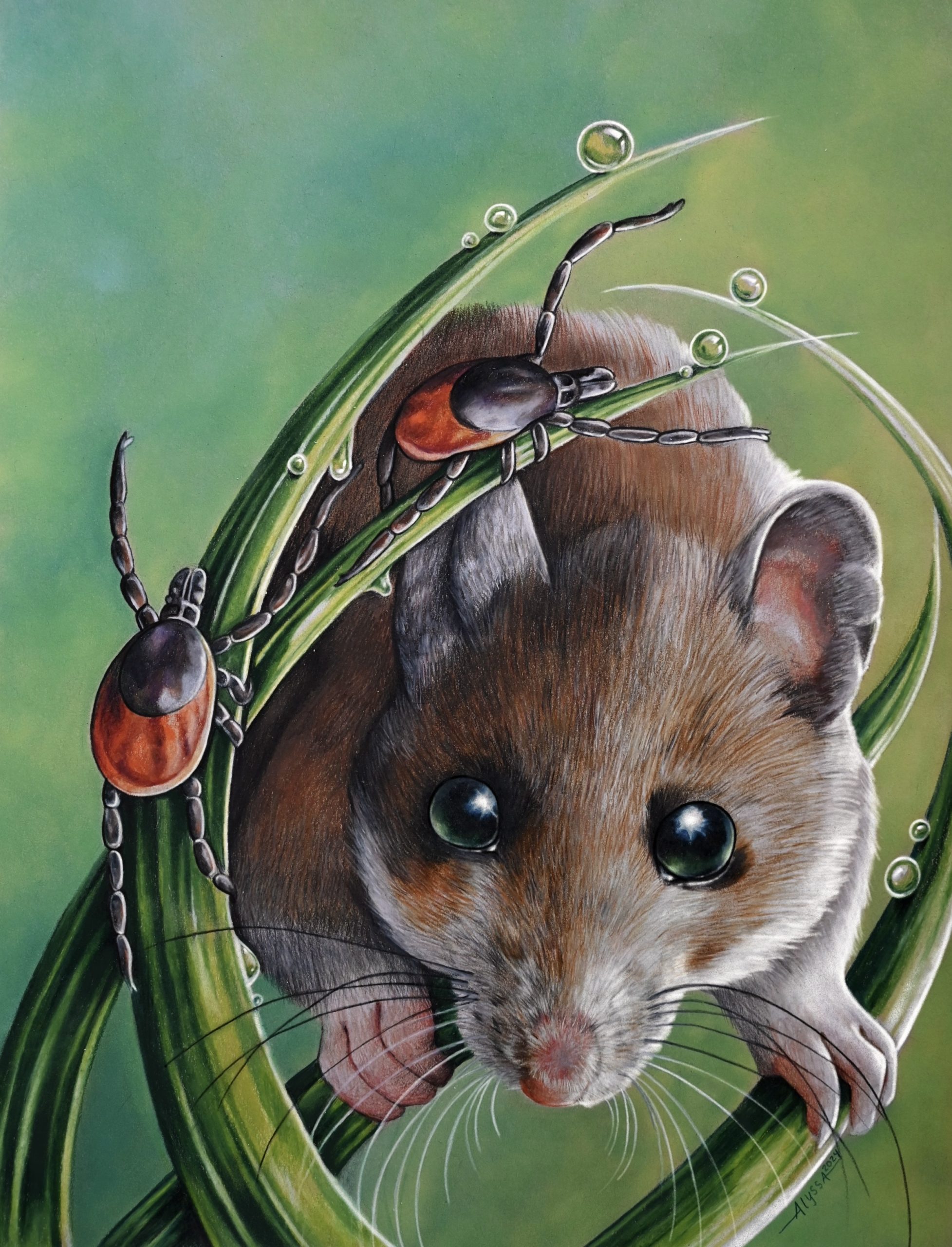Secret Life of Lyme
By Alyssa Marini
Artist Statement
Alyssa Marini is a PhD student in Biological Sciences at the University of Maine. Her research focuses on vector-borne disease systems, particularly the relationship between ticks and their wildlife hosts. Ticks and tick-borne diseases are a significant public health concern in Maine and the white-footed mouse (Peromyscus leucopus) plays an important role as the primary reservoir for the bacteria that causes Lyme disease. This piece is a colored pencil drawing illustrating the interaction between the Lyme disease vectoring black-legged tick (Ixodes scapularis) and the white-footed mouse. Black-legged ticks that feed on infected white-footed mice are likely to become infected themselves, making them capable of transmitting Lyme disease to people during their next blood meal. To find a host, ticks engage in a behavior called “questing” in which they patiently wait in the vegetation extending their first pair of legs. Once the host brushes up against it, the tick promptly climbs onto the host, eventually finding a spot to feed. Being aware of tick-borne pathogens and implementing necessary measures when venturing into tick habitats, particularly in the woods of Maine is crucial. Regularly conducting tick checks and wearing the appropriate outdoor attire to prevent the risk of contracting a tick-borne illness is essential.


